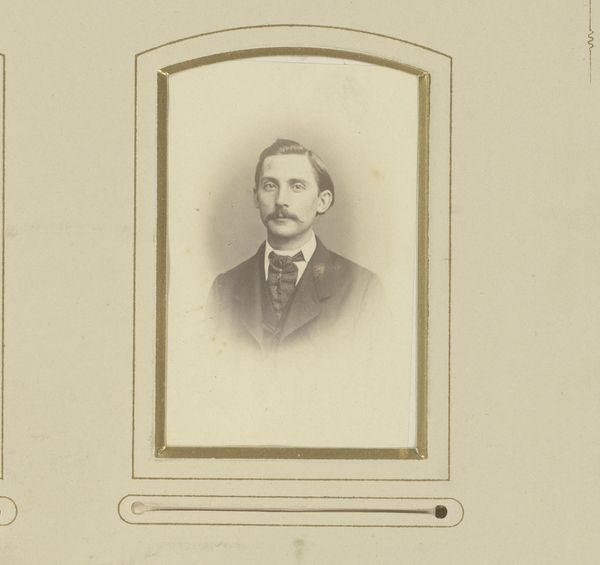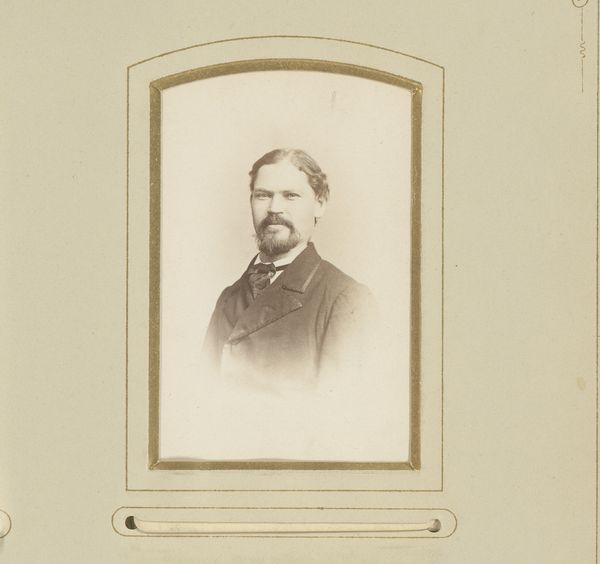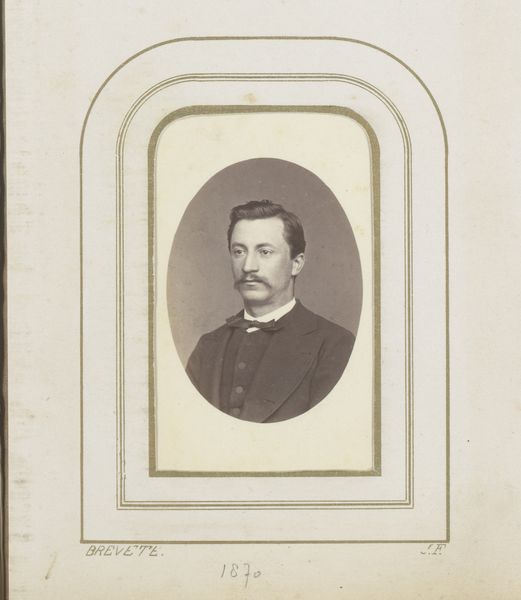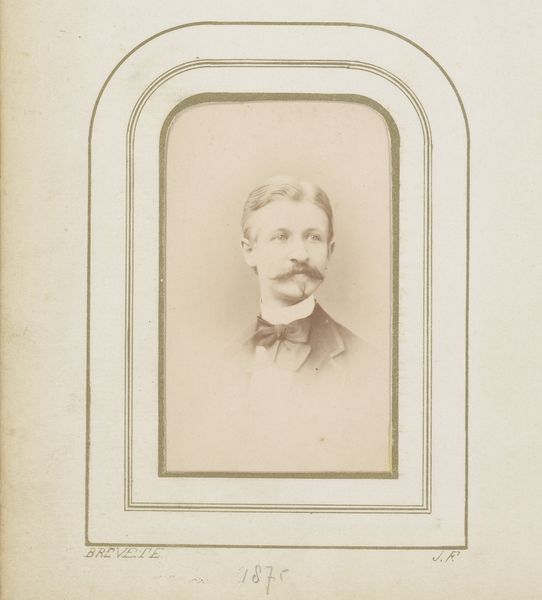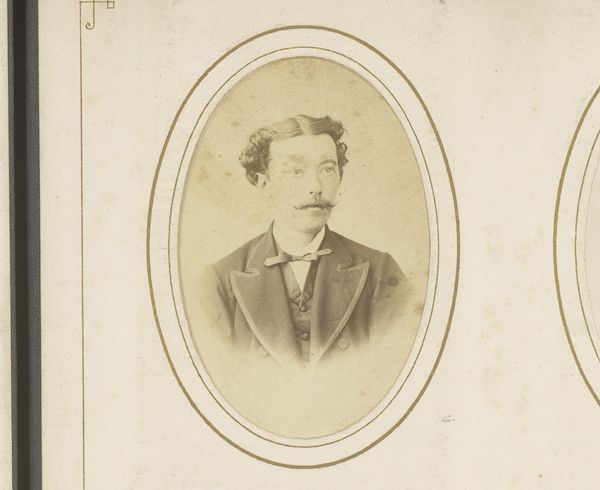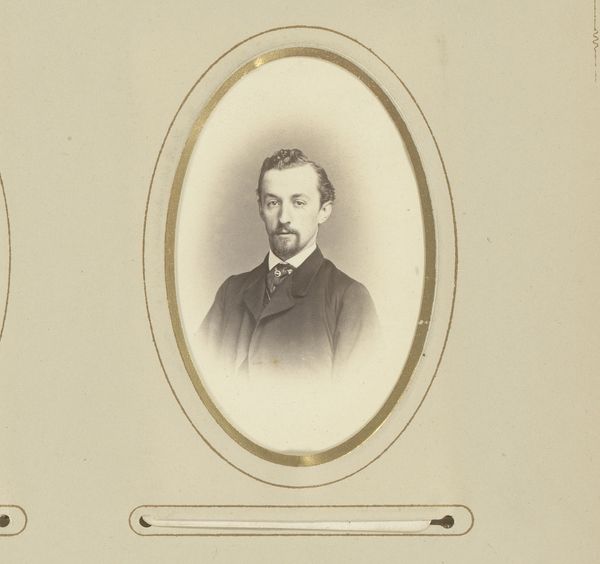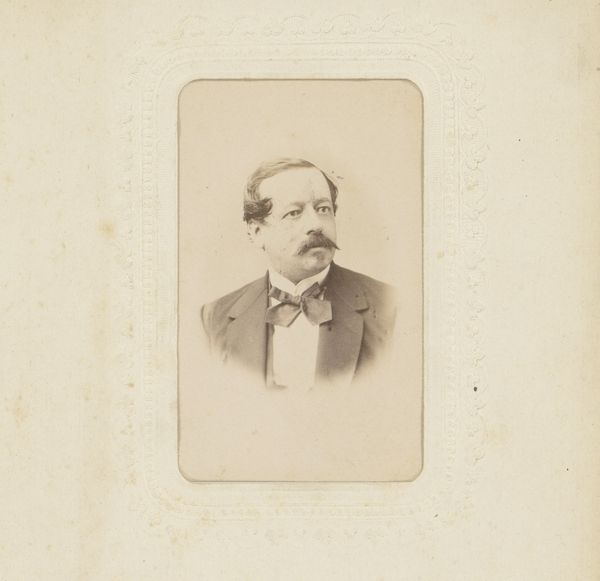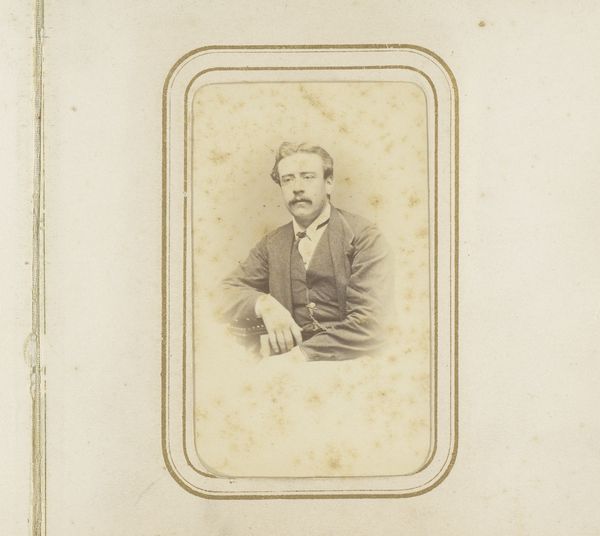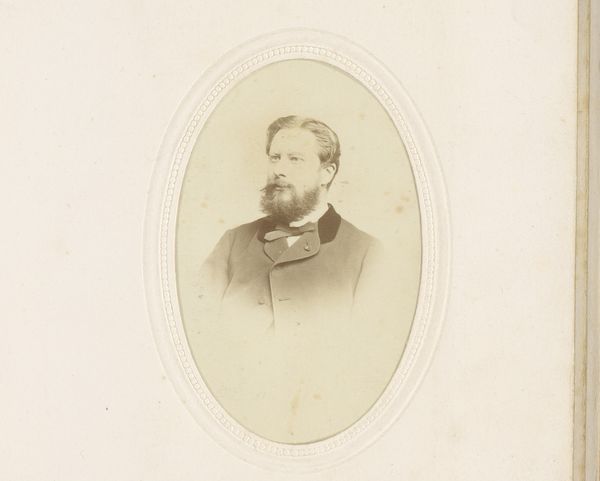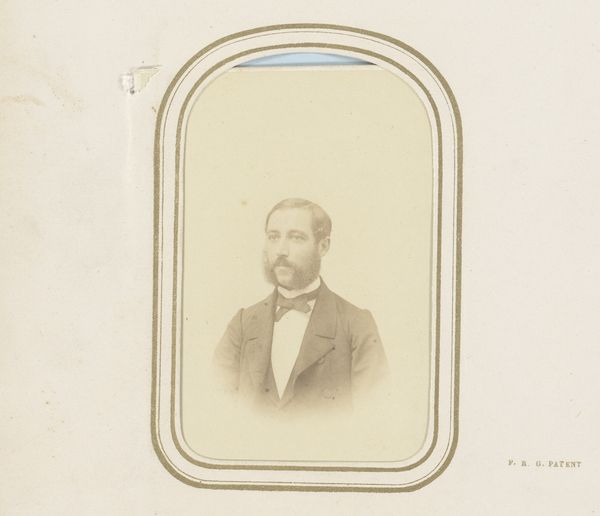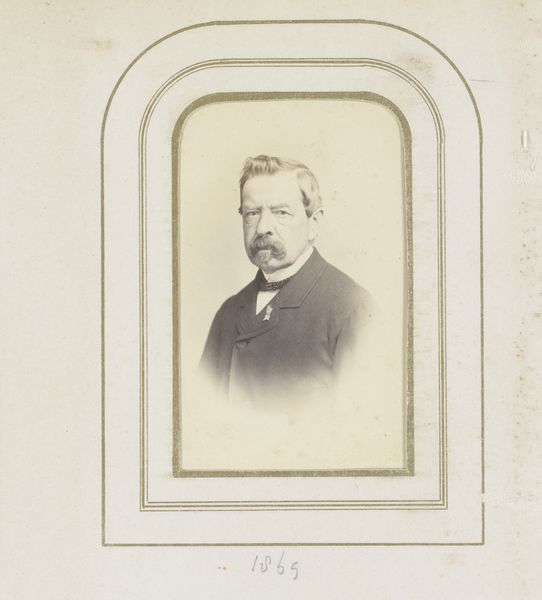
photography
#
portrait
#
photography
#
19th century
#
genre-painting
Dimensions: height 83 mm, width 50 mm
Copyright: Rijks Museum: Open Domain
Curator: We're looking at a photographic portrait created by Pierre Jean Byl between 1865 and 1871, simply titled "Portret van een man met snor," or "Portrait of a Man with a Moustache." Editor: Oh, wow, he looks so serious! The lighting is almost ethereal, like he's a ghost peering out from the past. He definitely fills up the space with an intensity... and such defined lines in his stare and dark features against the pale background! Curator: Indeed. The image encapsulates 19th-century sensibilities regarding representation, particularly through genre painting’s emphasis on capturing not just likeness but also elements of social standing. He's presented with a tailored coat, patterned bow tie, and neatly coiffed hair. It speaks to societal values that associated respectability with visible signs of decorum. Editor: His clothes definitely give a story away—he has an upper-class vibe, and his expression does too. I bet he thinks his mustache is super dashing. Like, "Behold, the height of masculine fashion!" He looks confident—a tad arrogant. And so formally framed, inside another ornamental frame... Did people preserve a lot of photographic art in this way? Curator: The photographic medium, while offering new possibilities for broader societal representation, also frequently mirrored the conventions of painting when rendering a person, or constructing an artistic object to frame it and offer to someone close. Within the social and cultural contexts, we must remember how relatively rare these images once were. Such portraits acted as important family keepsakes but also became public displays to define your reputation, at a time where race and class had great relevance. Editor: Reputation, definitely. There’s this tangible stillness—this almost tangible 'wait' in the face. Like the world held its breath for the picture. It gets you wondering: what were his dreams, his fears? Did he imagine anyone would still be staring back at him over a century later? Curator: Precisely. These visual artifacts of seemingly ordinary people in history, help give identity to forgotten peoples from a quickly vanishing world of social hierarchy. His story can remind us about larger narratives of power, access, and identity within rapidly modernizing Western societies. Editor: Thinking about it, it all fades into new textures of how things were, not that long ago, after all... Makes you consider how those past identities mingle with our new and fleeting images, and digital afterlives, right now.
Comments
No comments
Be the first to comment and join the conversation on the ultimate creative platform.
